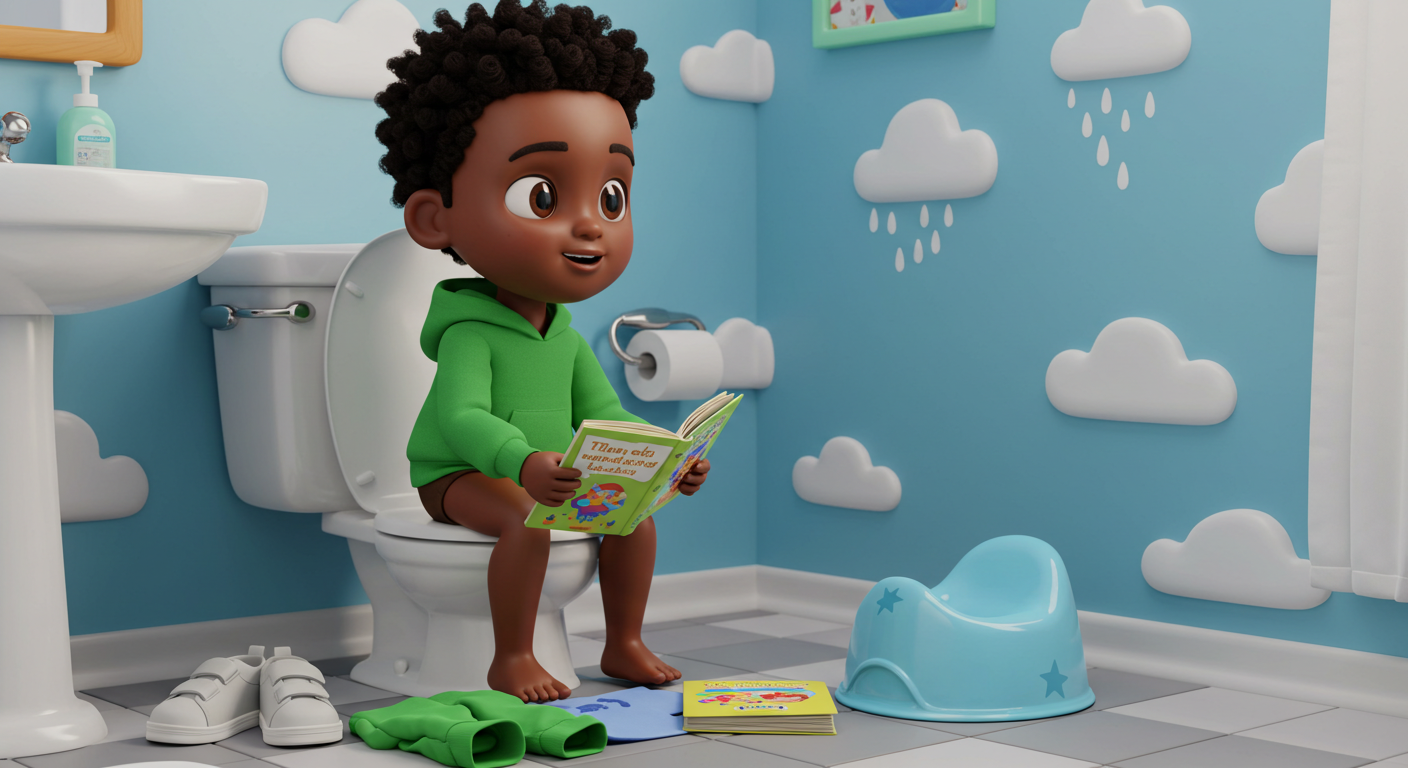Social Stories for Toileting:
A Supportive Tool for Successful Potty Training
Toilet training is a big milestone in a child’s life, but it can also be one of the most challenging. For children with autism, sensory sensitivities, or developmental delays, learning to use the toilet may come with additional stress and anxiety. That’s where social stories for toileting come in. These stories use simple language and visuals to help children understand the steps, expectations, and emotions surrounding the toileting process.
On this page, you'll learn how social stories for toileting work, who benefits from them, how to create your own, and where to download free resources. Whether your child is just starting potty training or struggling with specific aspects—like using public restrooms or having bowel movements—social stories can be a gentle, effective solution.
What Are Social Stories for Toileting?
Social stories are short narratives written in a way that helps children understand social situations, routines, or expectations. Developed by Carol Gray, social stories are especially effective for children with sensory challenges or autism spectrum disorder (ASD), as they present information in a predictable, non-threatening way.
Social stories for toileting are specifically designed to guide children through the toileting process, from recognizing the urge to go, entering the bathroom, pulling down pants, sitting on the toilet, wiping, flushing, and washing hands. These stories can address multiple potty training challenges and be adapted to fit your child’s specific needs.
Why Use Social Stories for Toileting?

Toileting is a complex process that requires children to manage physical, emotional, and social components all at once. For some kids, it’s not just about learning how to use the toilet—it’s also about feeling comfortable with the idea of doing so.
Using social stories for toileting can help in the following ways:
- Reduces anxiety about unfamiliar routines
- Increases understanding of expectations and steps
- Improves cooperation during potty training
- Supports communication for nonverbal or language-delayed children
- Encourages independence in self-care routines
- Promotes generalization of toileting behaviors at home, school, and public places
Who Can Benefit?
Social stories for toileting are ideal for:
- Children with autism
- Children with ADHD
- Children with anxiety or sensory sensitivities
- Children with developmental delays
- Toddlers who need structured, visual support
Even typically developing kids can benefit from a social story, especially if they’re anxious about using the toilet or need extra encouragement during training.
What to Include in a Toileting Social Story
A successful toileting social story should include:Sample Toileting Social Story Outline:
- Clear, simple language: Use first-person statements like “I go to the bathroom when I feel I need to pee or poop.”
- Visuals or pictures: Include step-by-step images to reinforce the written text.
- Calming tone: Reassure your child that toileting is normal and safe.
- Positive reinforcement: Mention praise or rewards for trying.
- Sequencing: Present the routine in the exact order it happens.
- Sometimes my body tells me I need to go to the bathroom.
- I might feel it in my belly or between my legs.
- I go to the bathroom and close the door.
- I pull down my pants and sit on the toilet.
- I pee or poop in the toilet.
- When I’m done, I wipe, flush, and wash my hands.
- Everyone goes to the bathroom. It’s a good thing to do.
- I feel proud when I use the toilet!
How to Make a Personalized Toileting Social Story
Creating your own social story can be even more effective than using a pre-made one. Here’s how to do it:
- Take real pictures of your child’s bathroom, toilet, and routines.
- Use a template or app to arrange the images and add text.
- Keep it short (5–10 steps is ideal for young children).
- Read the story daily—before, during, or after bathroom time.
- Reinforce progress with praise, rewards, or stickers.
Social Stories for Toileting Videos on Brave Kid Adventures:
Some children respond better to audio-visual storytelling than reading. That’s why our Brave Kid Adventures YouTube channel features animated and real-life social stories for toileting that walk kids through the bathroom routine in a fun, calm, and encouraging way.
🎥 Watch social stories for toileting on Brave Kid Adventures
These videos:
- Feature step-by-step visual guides
- Include kid-friendly narration and music
- Help desensitize children to common fears
- Reinforce routine and predictability
Subscribe to the channel for additional stories on things like going to the dentist and a haircut social story.
Using Social Stories in ABA or Classroom Settings
If your child is in applied behavior analysis (ABA) therapy or a special education setting, you can request that your child’s team incorporate social stories for toileting into their program. These can be used alongside:
- ASD Communication Cards
- Toileting schedules and visual supports
- Reward systems or token boards
- Desensitization protocols for sensory challenges
Social stories are flexible and can be tailored to your child’s cognitive level, communication abilities, and learning style.
Final Tips for Success
Conclusion
Toilet training doesn’t have to be a battle. With the support of social stories for toileting, children can better understand what’s expected of them and approach bathroom routines with confidence. Whether you're just getting started or addressing specific toileting challenges, social stories are a gentle, proven method to reduce anxiety, build independence, and make potty training more successful—for everyone involved.
If you haven't already, be sure to check out my ebooks, now on Amazon!

